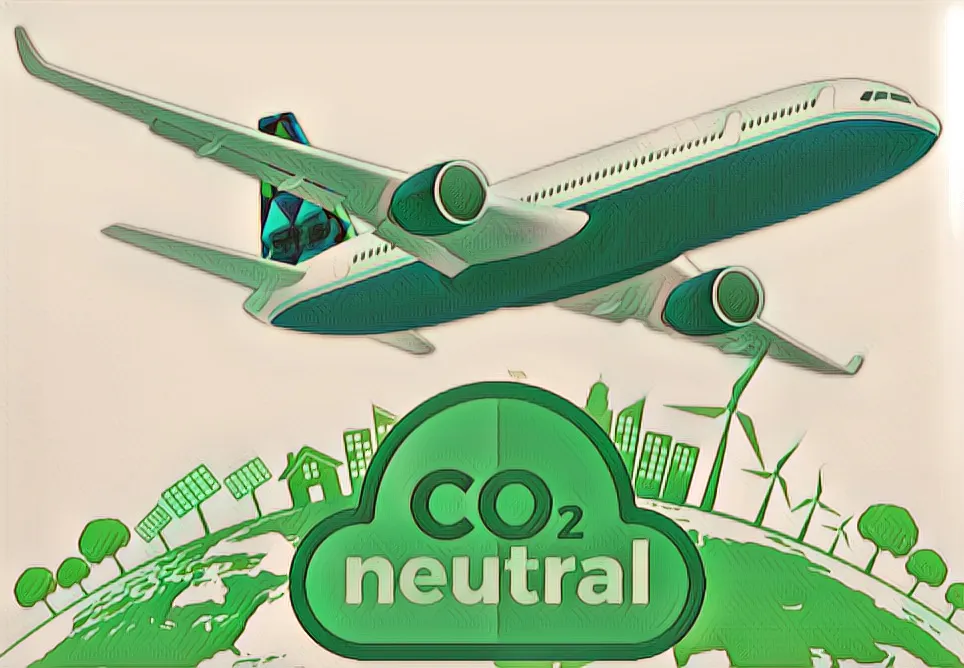
The aviation industry has been under pressure to become more sustainable for many years. Aviation, which accounts for almost 2 percent of the total global emissions, is a very difficult industry to decarbonise. Airlines have often been criticized for their passive attitude towards reducing environmental hazard. Current airline targets are not ambitious enough, which result in a very slow process of becoming more green. To speed up this process he airline industry adopted a target of eliminating carbon emissions by 2050, this means a carbon neutral future (Financial Times, 4 October 2021).
This new target can be divided into two sub targets. First of all, the number of flights worldwide must be drastically reduced. By doing this, the co2 emissions will not totally disappear, but will be significantly reduced.
The second sub target, and the most important one with regard to becoming fully carbon neutral, is to use new innovations and technologies to support emission reduction. This is important for both looking at emissions of airplanes, and emissions of airports. SITA, an IT provider for the air transport industry, has been developing a technology to achieve a carbon neutral airport for many years. The technology measures, predicts and reduces emissions on all important (potential high emission) areas at an airport. Think about the emission of an aircraft turnaround, landing and take-off cyclus, operating infrastructure (transportation systems). This system helps airports to analyse the critical areas, and to determine which elements need the strongest focus. By measuring all the processes, they can improve operations and make it more efficient. For example, the system enables pilots to notify and airplane fueller when they need less fuel than they expected. This can happen when pilots face a route change, so they have to taxi less distance. Less fuel in an airplane means less weight, which means less co2 emissions.
Due to the increasing pressure on this industry and the fact that they have finally set an (extremely) ambitious target, the road to a carbon neutral industry will demand a lot from future technology and information system developments.
https://www.ft.com/content/c43e06ff-48b5-488e-a59f-2ba60f463781

Really interesting topic! I wonder however if these targets are realistic, especially the first sub target. Reducing flight globally would indeed reduce the CO2 emissions from the industry, but aviation is a very important mode of transport globally. It makes it possible for families and friends who live far away from each other to see each other in a relatively short time, and is also a big part of business travel. Therefore, especially in today’s global economy, it seems more probable that airline travel will increase in the future, or at least stay very similar, rather than drastically decrease. Additionally, with the current pandemic, airline travel has temporarily decreased but will probably kick back into high gear. It seems that the second sub target is a more realistic starting point, as new technologies can be applied to make the processes on the ground more carbon efficient. It will be interesting to follow how these new targets affect aviation, and whether they end up being realistic or too far-fetched.
Hi max very interesting read! I like how you considered the operational and airport side of the aviation industry in connection to carbon emission reduction. However, I also have to agree with Jutta, that reaching a significant reduction in the frequency of flights will be hard to achieve. The global population growth and rate at which emerging countries are developing outweighs the decrease in business travelers, which in the wake of Covid-19 have more than ever reconsidered whether it is really worth bearing the costs to conduct business in-person. I believe the second sub goal is significantly more vital, having the capability to decrease emissions by increasing efficiency and supply chain visibility. Regardless, using IT to make airports sustainable will by far not solve the industries emission problem. Air travel in itself accounts for the majority of emissions, leading to the ambitious goals, in my opinion, being directly dependent on technological advancements in the field of long-distance transportation. Initiatives such as Airbus’s ZeroE hydrogen planes or Hyperloop have shown promising results and will be necessary to achieve the goals by 2050 and replace current fossil powered airplanes. However, with Airbus only planning to launch its first hydrogen powered planes in 2035, the industry will likely not be climate neutral by 2050, given the short time window for carriers to replace an entire fleet of fossil fueled aircraft.